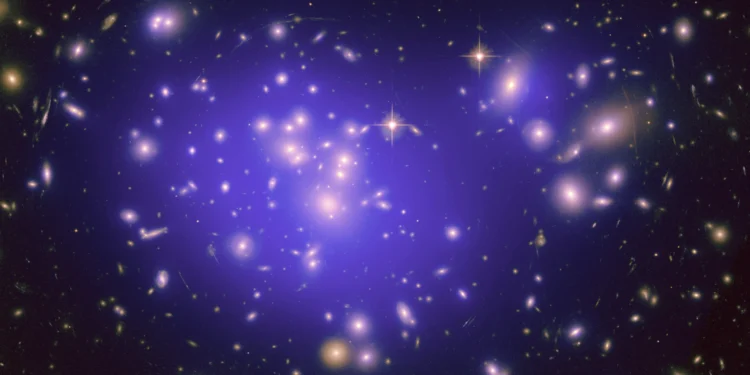Dark matter, one of the most enigmatic phenomena in modern physics, holds the key to understanding the universe’s hidden structure. While it constitutes a staggering 85% of all matter, its elusive nature has kept scientists searching for innovative ways to study it. A groundbreaking approach proposes using Earth’s ionosphere as a natural detector for dark matter signals.
The Enigma of Dark Matter
The concept of dark matter has intrigued physicists for decades. Though it cannot be seen or touched, its gravitational effects are unmistakable. From the clustering of galaxies to the motion of stars, dark matter exerts a force that shapes the cosmos. Yet, its true nature remains a mystery.
Physicists have long hypothesized that dark matter comprises exotic particles such as axions or dark photons. Unlike ordinary matter, these particles do not interact with light, making them invisible to conventional detection methods. Despite numerous experiments, no definitive evidence has surfaced, pushing scientists to explore innovative methods, including leveraging Earth’s natural environment.
Earth’s Ionosphere: A Hidden Ally in the Search for Dark Matter
The ionosphere, a layer of Earth’s upper atmosphere filled with charged particles, may hold the key to detecting dark matter. This region, known for its influence on radio wave propagation, has been extensively studied and monitored. Its predictable behavior makes it an ideal testing ground for dark matter interactions.
Researchers propose that axions or dark photons, under specific conditions, could convert into low-frequency radio waves within the ionosphere. This process hinges on a unique resonance between the mass of dark matter particles and the plasma frequency of the ionosphere. The result? Detectable photons that could reveal dark matter’s elusive presence.
According to the study, this approach eliminates many uncertainties associated with traditional astrophysical environments. Unlike distant neutron stars or the solar corona, the ionosphere’s proximity and well-documented properties provide a more controlled setting for experimentation.
How the Experiment Works
The proposed experiment involves small, electrically sensitive dipole antennae capable of capturing the faint signals resulting from dark matter conversion. These antennae would monitor the ionosphere for specific frequencies corresponding to predicted dark matter interactions.
The science behind this is both elegant and practical. As dark matter waves pass through the ionosphere, their interaction with plasma particles could generate photons. By fine-tuning the antennae to detect these signals, researchers aim to isolate them from background noise, paving the way for meaningful discoveries.
This method stands out for its affordability and accessibility. Unlike massive particle colliders or space-based telescopes, the required equipment is relatively inexpensive and straightforward. This democratization of dark matter research could inspire similar initiatives worldwide.
Why This Matters: A New Frontier in Physics
The implications of this research are profound. For decades, dark matter has eluded direct detection, limiting our understanding of the universe’s composition. By exploring uncharted regions of the dark matter parameter space, this study could unlock new opportunities for discovery.
Moreover, this approach bridges the gap between theoretical predictions and experimental validation. The resonance mechanism predicted by the researchers offers a concrete framework for detecting dark matter, moving the field beyond speculative hypotheses. It also provides a unique complement to existing methods, such as direct detection experiments and astrophysical observations.
Challenges on the Horizon
While the potential of this method is immense, challenges remain. Signal noise, both from natural sources and human-made interference, could complicate data collection. Additionally, the faintness of the predicted signals requires highly sensitive equipment and precise calibration.
Collaboration will be key to overcoming these obstacles. Researchers are already engaging with experimental physicists to refine their methods and identify potential sites for testing. Partnerships with organizations monitoring the ionosphere could also provide valuable data to support the effort.
Looking Ahead: The Future of Dark Matter Research
The journey to uncover dark matter is far from over. This innovative approach represents just one step in a broader effort to unravel the universe’s secrets. Future experiments, informed by this study, could refine the detection methods and explore other potential environments for dark matter interactions.
As researchers continue to collaborate and innovate, the dream of understanding dark matter draws closer to reality. Whether through the ionosphere or other means, the quest for discovery serves as a testament to humanity’s unyielding curiosity and determination.
Conclusion
The idea of using Earth’s ionosphere to detect dark matter signals is a testament to human ingenuity and the boundless possibilities of scientific exploration. By combining theoretical insights with practical experimentation, researchers are charting a new course in the search for the universe’s hidden components.
Reference:



















